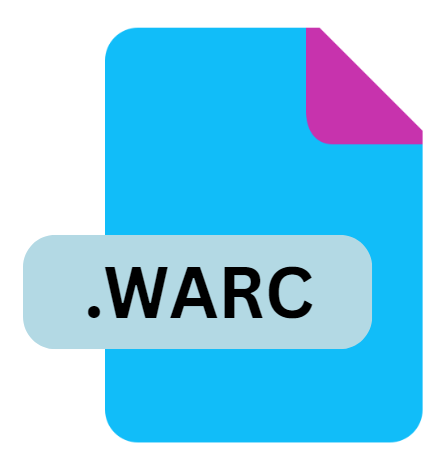.WARC File Extension

Web Archive
| Developer | International Internet Preservation Consortium |
| Popularity | |
| Category | Web Files |
| Format | .WARC |
| Cross Platform | Update Soon |
What is an WARC file?
The WARC (Web ARChive) file extension is a standard format for storing web content harvested through web crawling and scraping.
These files are primarily used by organizations that need to archive web content, such as libraries, research institutions, and cultural heritage organizations.
WARC files encapsulate various forms of data, including web pages, images, and other online resources, preserving them for future access and analysis.
More Information.
The initial purpose of the WARC format was to provide a standardized method for web archiving, addressing the limitations of the ARC format.
The Internet Archive and other institutions that were actively involved in web archiving needed a format that could store more complex and diverse web content.
WARC files offered improvements in metadata handling, file compression, and support for multiple records within a single file, making it a superior choice for long-term web preservation.
Origin Of This File.
The WARC format was developed as an improvement over the older ARC format, which was used for web archiving in the early days of the internet.
The development of WARC was driven by the need for a more robust and flexible format capable of handling the evolving nature of web content.
It was standardized by the International Organization for Standardization (ISO) in 2009, ensuring its adoption and usage across different platforms and institutions.
File Structure Technical Specification.
WARC files are structured to store multiple records, each containing metadata and the actual web content. The structure includes the following components:
1. File Header: This contains metadata about the WARC file itself, such as the version and file creation date.
2. Records: Each record is a self-contained unit that includes a header and a content block. The types of records can include:
- Response Records: Contain the HTTP response received from a web server, including the HTML of a web page.
- Request Records: Store the HTTP request sent to a web server.
- Metadata Records: Hold additional metadata related to the web content.
- Resource Records: Store non-HTML resources like images, CSS, and JavaScript files.
3. Record Header: Each record header includes metadata such as the record type, date of capture, and content length.
4. Content Block: This contains the actual web content or resource data.
Technical Specifications
- Format: WARC files are typically saved with the
.warcextension. - Compression: WARC files can be compressed using gzip to reduce their size.
- Metadata: WARC supports extensive metadata, including information about the capture process, the source URL, and content type.
- Standardization: The WARC format is standardized by ISO 28500:2017, ensuring consistency and interoperability.
How to Convert the File?
Converting WARC files typically involves extracting the content into more accessible formats such as HTML, JPEG, PNG, or plain text. Various tools and libraries are available to facilitate this process:
- Webrecorder: A popular tool for web archiving that can also export WARC files to other formats.
- Heritrix: An open-source web crawler that supports WARC file conversion and extraction.
- Python Libraries: Libraries such as
warcioandpywbcan be used to programmatically extract and convert WARC files.
Conversion can be achieved using command-line tools or custom scripts, depending on the specific requirements and the target format.
Advantages And Disadvantages.
Advantages:
- Comprehensive Archiving: WARC files can store a wide range of web content, including HTML pages, images, scripts, and metadata.
- Standardization: The ISO standardization ensures that WARC files are compatible across different systems and tools.
- Metadata Support: Extensive metadata capabilities allow for detailed documentation of the archived content.
- Compression: Support for gzip compression helps in managing the storage requirements for large-scale web archives.
Disadvantages:
- Complexity: The structure and technical aspects of WARC files can be complex, requiring specialized tools and knowledge to work with them effectively.
- File Size: Even with compression, WARC files can become quite large, posing challenges for storage and transfer.
- Access and Analysis: Extracting and analyzing data from WARC files may require significant computational resources and specialized software.
How to Open WARC?
Open In Windows
- Webrecorder Player: A desktop application that allows users to open and view WARC files.
- Heritrix: While primarily a web crawler, Heritrix can be used to access and analyze WARC files.
- Command Line Tools: Python-based tools like
warciocan be run from the command line to extract and inspect WARC content.
Open In Linux
- OpenWayback: An open-source project that provides a way to replay web archives stored in WARC files.
- Webrecorder Player: Also available for Linux, providing a user-friendly interface for viewing WARC files.
- Command Line Tools: Python libraries such as
warcioandpywbcan be installed and used on Linux systems.
Open In MAC
- Webrecorder Player: Available for macOS, this application enables viewing and interaction with WARC files.
- Wayback Machine Software: Allows users to replay archived web content from WARC files.
- Python Libraries: Tools like
pywbcan be installed and used for opening WARC files on macOS.













